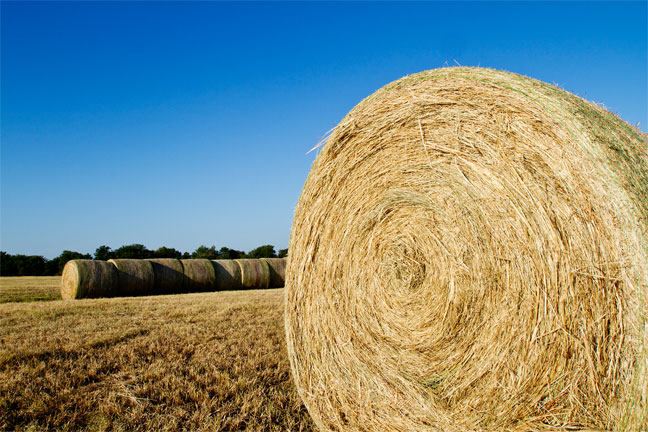
Agricultural News
Glenn Selk Offers More Hay Storage Tips to Save More Hay
Wed, 28 May 2014 15:41:56 CDT

Glenn Selk, Oklahoma State University Emeritus Extension Animal Scientist, writes in the latest Cow-Calf Newsletter:
Last week's Cow Calf Corner Newsletter discussed some of the potential losses to large round bales due to differing storage methods. Continuing with the train of thought of preserving as much harvested hay as possible, other important storage concepts can be used as the hay is being harvested this spring and summer.
The storage site is an important consideration in reducing bale losses. Select a site that is not shaded and is open to breezes to enhance drying conditions. The site should also be well-drained to minimize moisture absorption into the underside of the bales. As much as 12 inches of the bottom of a bale can be lost through moisture absorption resulting from the wicking action.. Ground contact can account for over half of the total dry matter losses. Where practical, keep bales off the ground using low cost, surplus materials such as discarded pallets, racks, fence posts, railroad ties, and used tires. Another alternative is to use a layer of crushed rock about six inches deep to ensure good drainage within and around the storage site.
Bales should be stored in rows, buffed end-to-end, and oriented in a north/south direction. The combination of the north/south orientation and at least three feet between rows will provide for good sunlight penetration and air flow, which will allow the area to dry faster after a rain. Vegetation between rows should be mowed. Research has shown that orientation is a minor consideration if the bales are used before early spring because the losses are relatively small until that time. If stored into the summer, bales oriented in an east-west direction can experience severe deterioration on the north-facing surface.
The source of these and other ideas about hay storage can be found in Dr. Ray Huhnke's Oklahoma Cooperative Extension Fact Sheet "Round Bale Storage" BAE-1716.
WebReadyTM Powered by WireReady® NSI
Top Agricultural News
More Headlines...




















